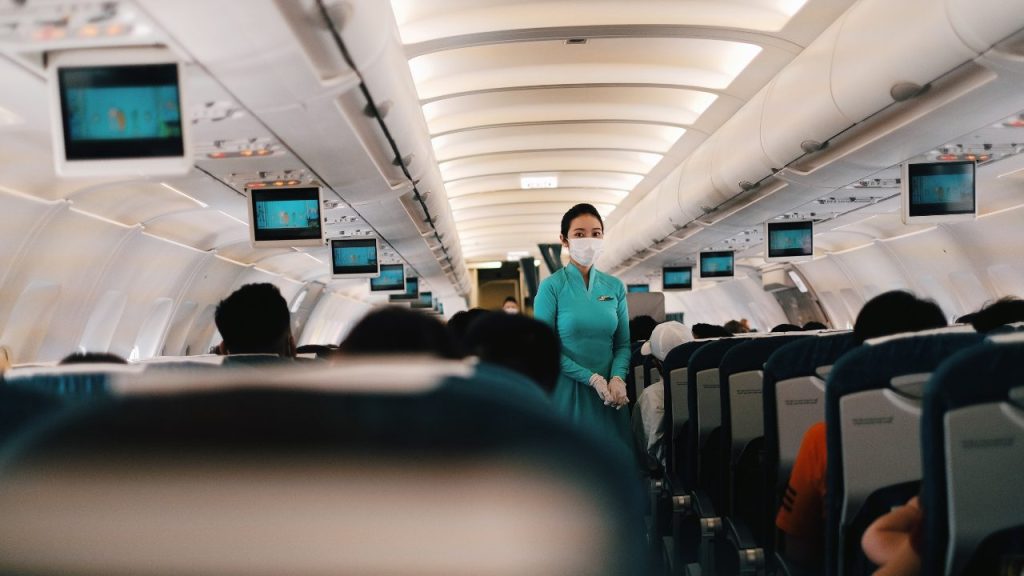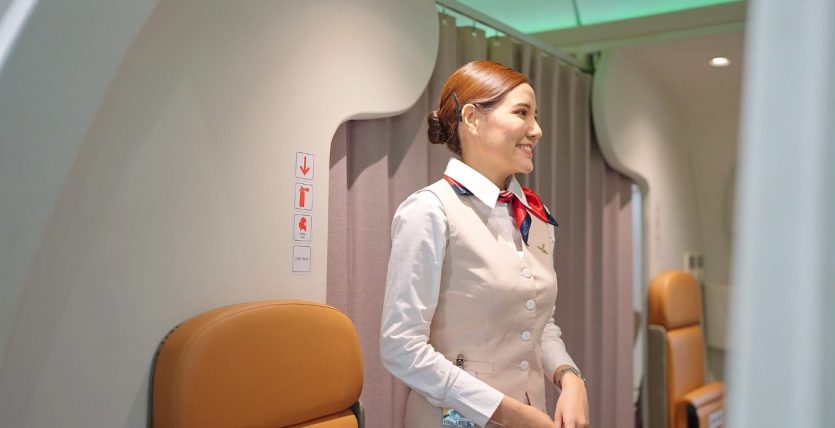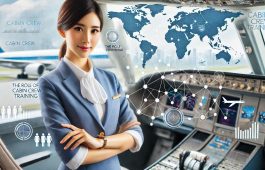Cabin Crew Training: Soaring to New Heights
Cabin Crew Training: Soaring to New Heights
The world of aviation is one that is constantly evolving, and within it, the role of cabin crew is more important than ever. These professionals ensure that passengers are comfortable, safe, and have an unforgettable experience during their flights. However, behind the welcoming smiles and polished professionalism is a rigorous training process. For students aspiring to become a part of this high-flying career, cabin crew training is the first step toward achieving their dreams.
The Importance of Cabin Crew Training
When you think about air travel, your mind might naturally wander to pilots, aircraft engineers, or the glamorous destinations. However, cabin crew members—also known as flight attendants or air hostesses—play a crucial role in the airline industry. They are the front line of customer service, the ones passengers rely on for safety, comfort, and assistance. Their job involves much more than serving meals and beverages; they must ensure that safety protocols are followed, handle emergency situations, and offer a positive customer experience at every stage of the flight.
Cabin crew training prepares students for all these responsibilities. It’s a specialized program designed not only to equip trainees with the necessary knowledge and skills but also to instill the personality traits and resilience required for the job. Training typically covers various aspects of aviation, safety, and customer service, all tailored to the specific requirements of the aviation industry.
What Does Cabin Crew Training Entail?
Cabin crew training is a comprehensive process that prepares students to meet the dynamic demands of air travel. Whether you’re in the middle of an in-flight emergency or helping a nervous passenger settle into their seat, you need to be prepared for any situation. The training modules typically focus on the following areas:
- Safety Procedures: First and foremost, cabin crew training places significant emphasis on safety protocols. Instructors teach trainees about emergency procedures, first aid, and evacuation techniques. Whether it’s a medical emergency or an in-flight fire, flight attendants must be ready to handle it with confidence and calmness.
- Customer Service: Airlines aim to provide top-tier service, and the cabin crew is integral to delivering this. Training focuses on interpersonal skills, customer interaction, conflict resolution, and maintaining a positive attitude throughout the flight. Students learn how to assist passengers in a way that enhances their travel experience, making them feel comfortable and valued.
- Health and Well-being: It’s not just about the passengers; cabin crew must take care of their own health too. Training includes teaching proper posture, handling long hours, managing jet lag, and maintaining personal well-being amidst the physical demands of the job. Ensuring that flight attendants are physically and mentally fit is crucial for their performance.
- Cultural Sensitivity and Communication: Airlines operate in a global environment, and cabin crew members interact with passengers from diverse cultural backgrounds. Training includes learning about cultural sensitivities, communication techniques, and multilingual skills, ensuring that every passenger feels respected and understood.
- Aircraft Familiarization: Understanding the interior layout and systems of an aircraft is crucial. Trainees are taught about different aircraft models, their safety features, and how to navigate within the confined spaces of the cabin efficiently.
Hands-On Training for Real-World Scenarios
While theoretical knowledge is essential, hands-on training is the cornerstone of cabin crew preparation. Trainees are typically put through realistic in-flight simulations and practical drills to experience what it’s like on an actual flight. These exercises help them practice emergency evacuations, serving food and drinks, assisting passengers with special needs, and handling difficult situations such as medical emergencies or unruly passengers.
These simulations are not just about testing skills—they are designed to help students build the confidence they need to perform under pressure. The real-world scenarios they face during training ensure that when they eventually step aboard an actual flight, they can do so with the knowledge that they have already faced various challenges and come out on top.
The Role of Technology in Cabin Crew Training
In today’s digital age, technology plays a significant role in cabin crew training. Virtual reality (VR) and interactive modules are increasingly being integrated into training programs, allowing students to simulate in-flight experiences without leaving the ground. VR can offer immersive emergency scenarios, enabling trainees to experience various emergency situations in a controlled, risk-free environment.
Moreover, online training platforms are making cabin crew training more accessible to students worldwide. Platforms like Travel Learning Hub offer detailed courses that can be taken remotely, allowing aspiring cabin crew members to get a head start on their career from the comfort of their own homes.
The Soft Skills That Make a Great Cabin Crew Member
While technical skills are essential, it’s often the softer skills that set great cabin crew members apart. Empathy, patience, and a genuine desire to help others are characteristics that cannot be taught through textbooks alone. Training focuses on cultivating these qualities, ensuring that students understand the importance of emotional intelligence in their role.
Whether it’s calming a nervous flyer or dealing with a distressed passenger, cabin crew members must be able to read situations quickly and respond with the appropriate level of care and professionalism. The training encourages students to develop emotional resilience, enabling them to remain calm and composed in stressful situations.

Career Opportunities After Cabin Crew Training
One of the major advantages of completing cabin crew training is the wide range of career opportunities it opens up. While most students aim to become flight attendants with commercial airlines, the skills they gain during training can also lead to other aviation-related roles. Some might pursue careers in customer service management, airline operations, or aviation safety.
Airlines value trained cabin crew members who are ready to contribute to the organization from day one. With airlines around the world continuously looking for skilled and knowledgeable staff, job prospects in the aviation industry are promising for those who complete a reputable training program.
For students seeking to become a part of this exciting and rewarding career, it’s essential to choose a training program that not only offers technical expertise but also prepares them for the practical demands of the job.
Suggested Reading: Entrepreneurship in Travel: Building Your Own Agency
Conclusion
In conclusion, cabin crew training is not just about learning how to serve drinks or assist passengers. It is about preparing students to face a dynamic and demanding role that requires a blend of technical knowledge, interpersonal skills, and emotional intelligence. With the right training, aspiring cabin crew members can soar to new heights in their careers, contributing to the ever-growing world of aviation.
Institutions like Travel Learning Hub are excellent places for students to begin their journey, offering industry-standard training that ensures students are not just employable but ready to thrive in the aviation industry. By equipping students with both the technical skills and soft skills needed, Travel Learning Hub provides a well-rounded educational experience that prepares individuals for a successful career as cabin crew members. Whether you aim to join a major airline or explore other aviation-related careers, your path begins with the right training, and Travel Learning Hub is the ideal place to start.
For more information on cabin crew training and other travel-related courses, visit Travel Learning Hub.





